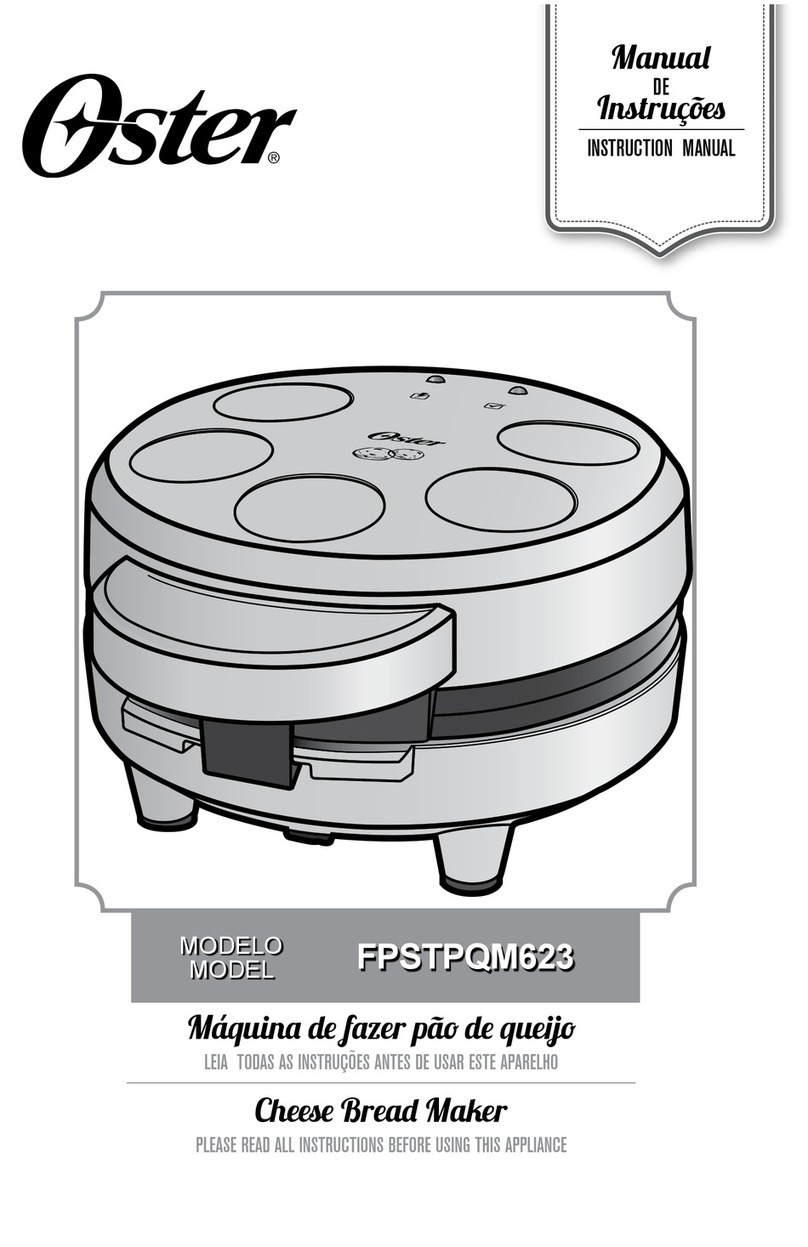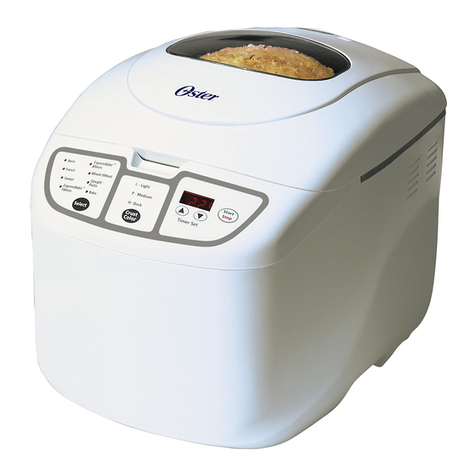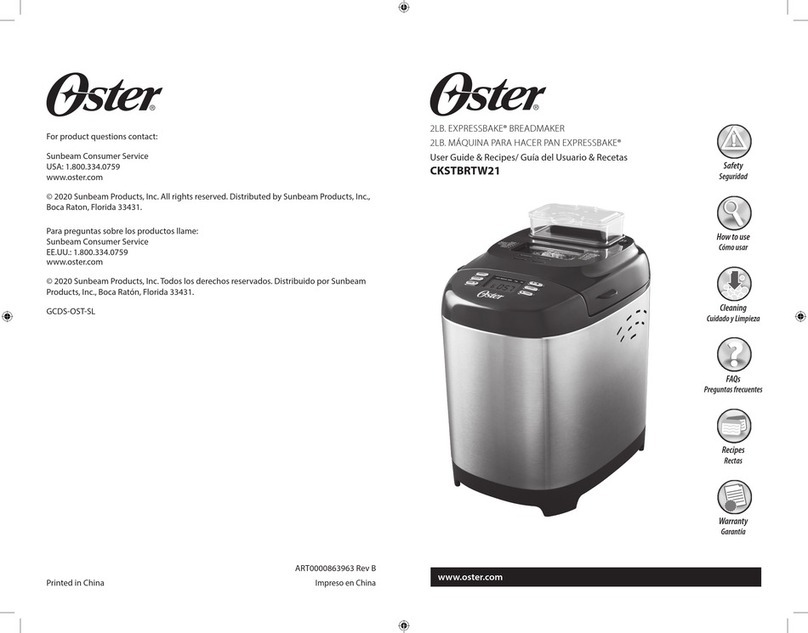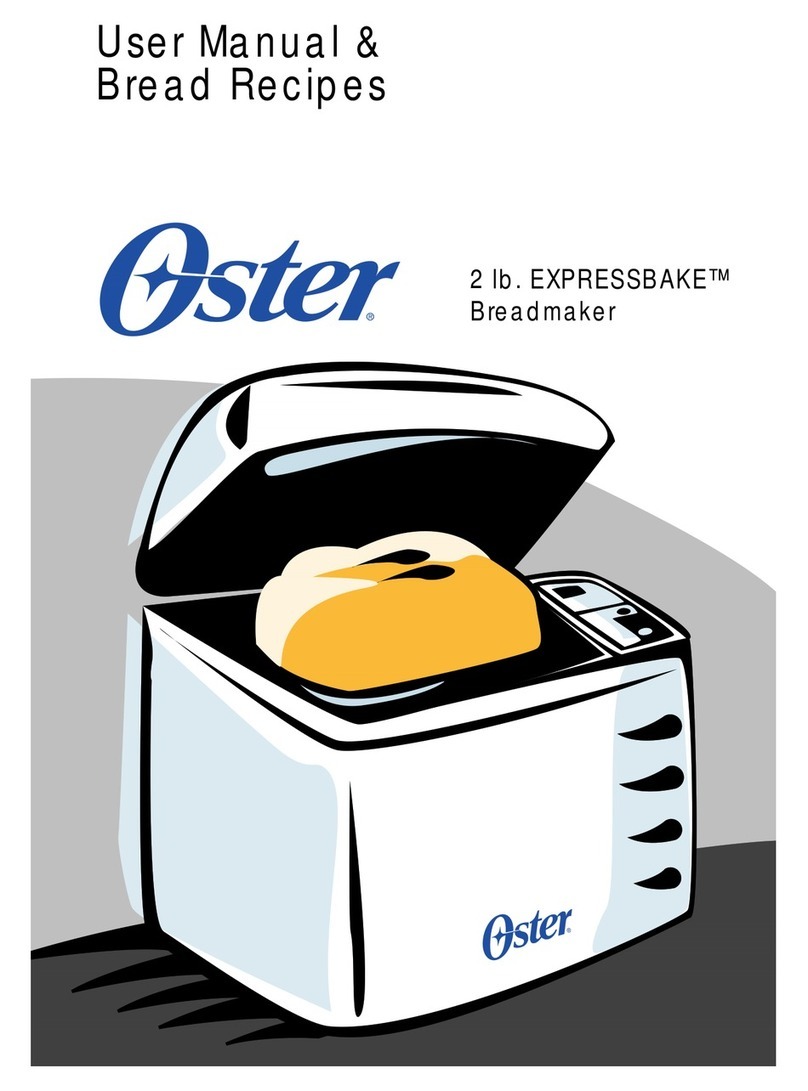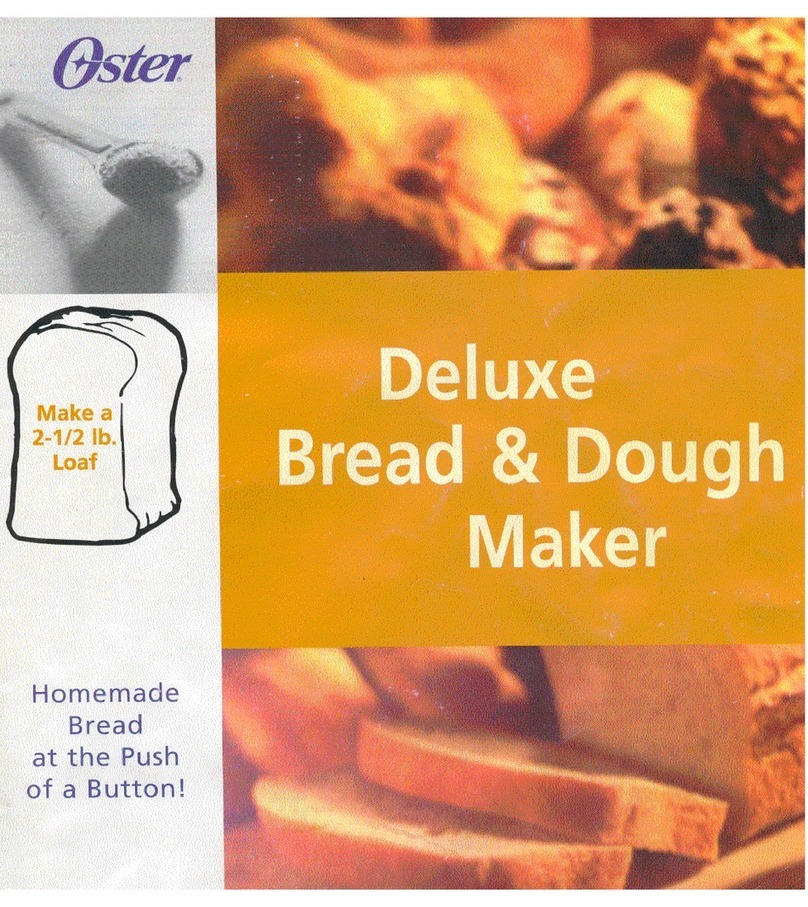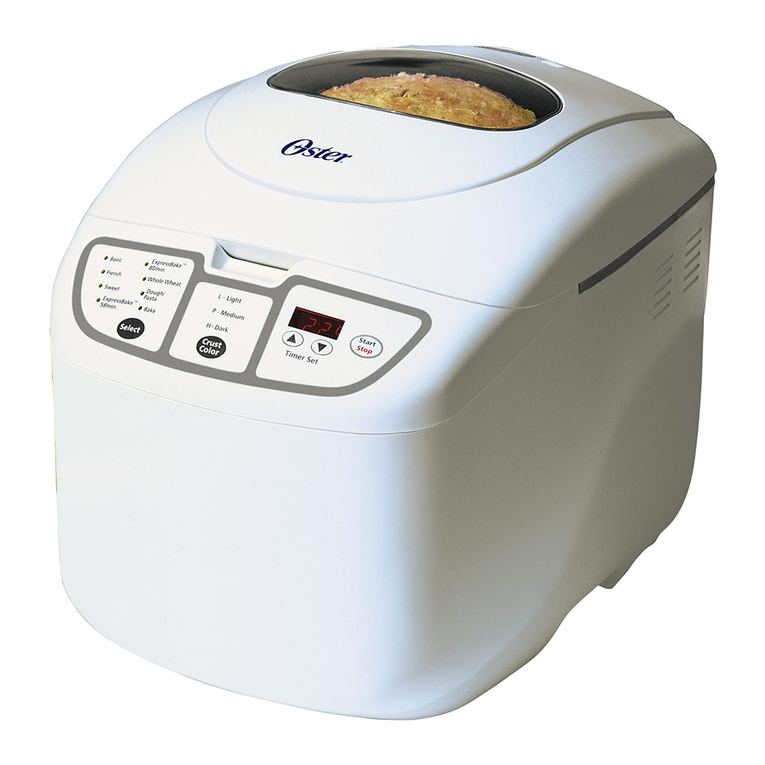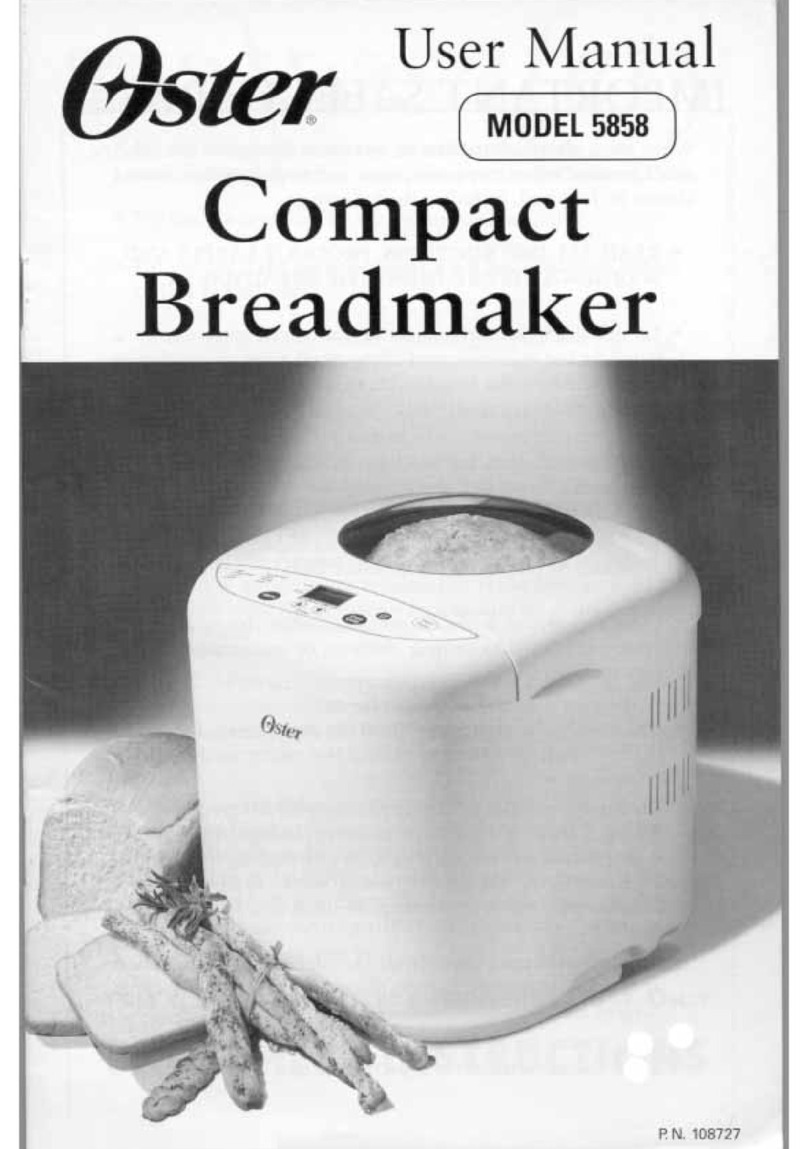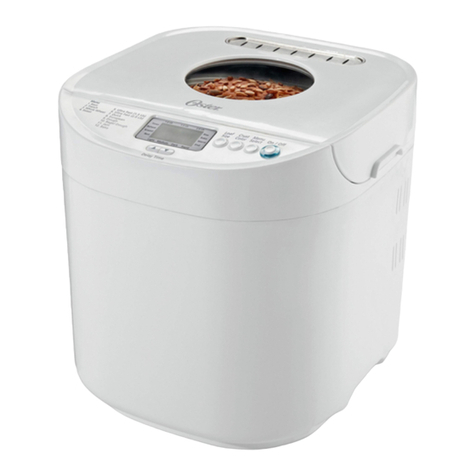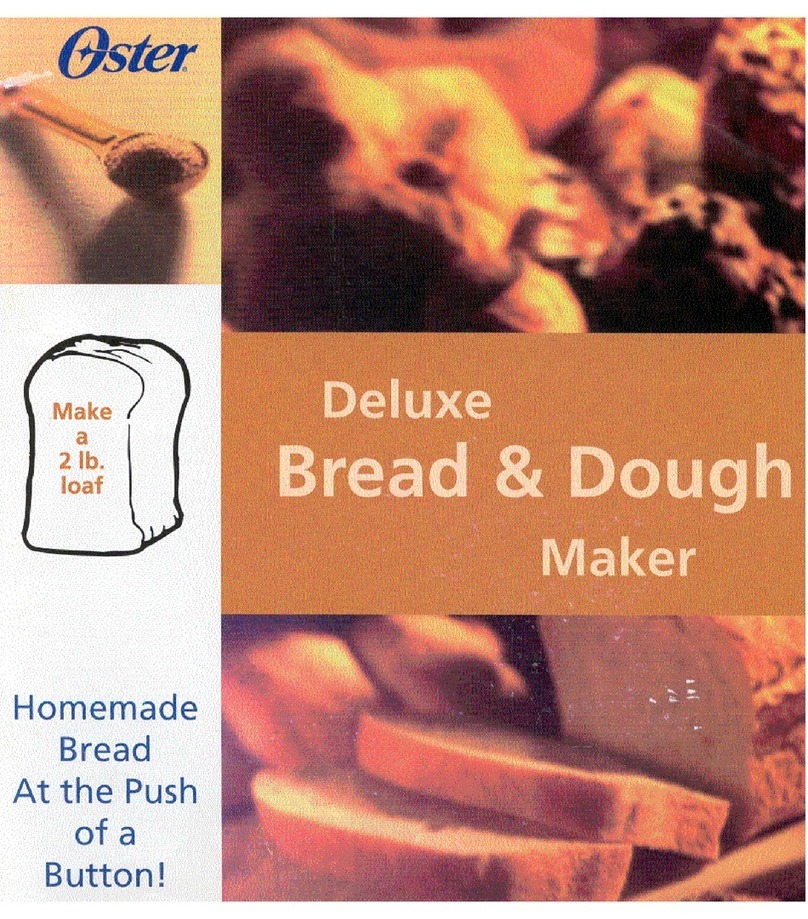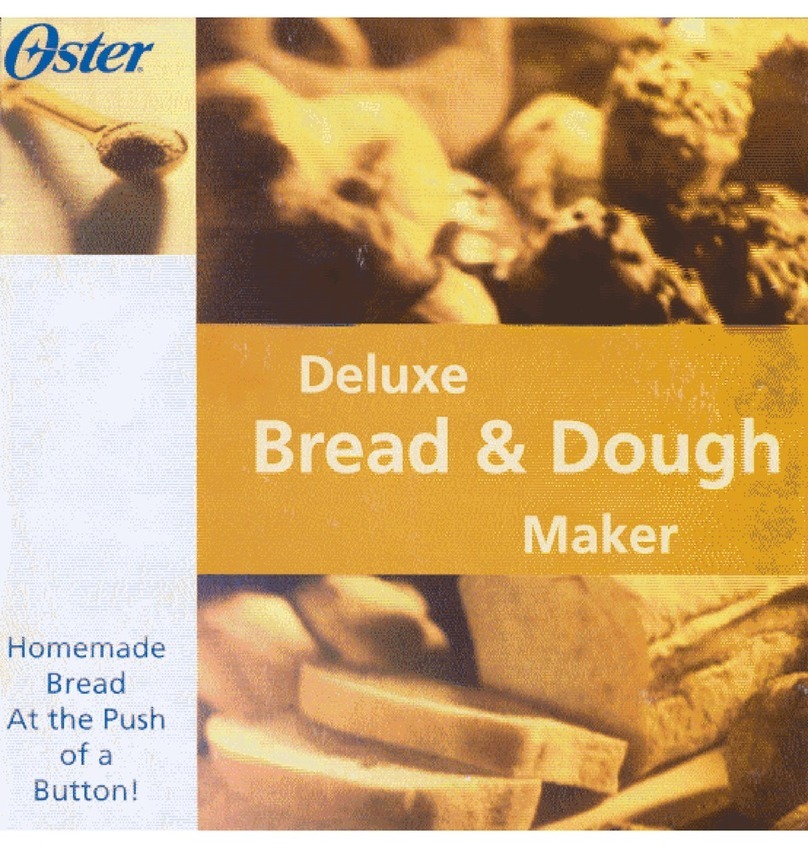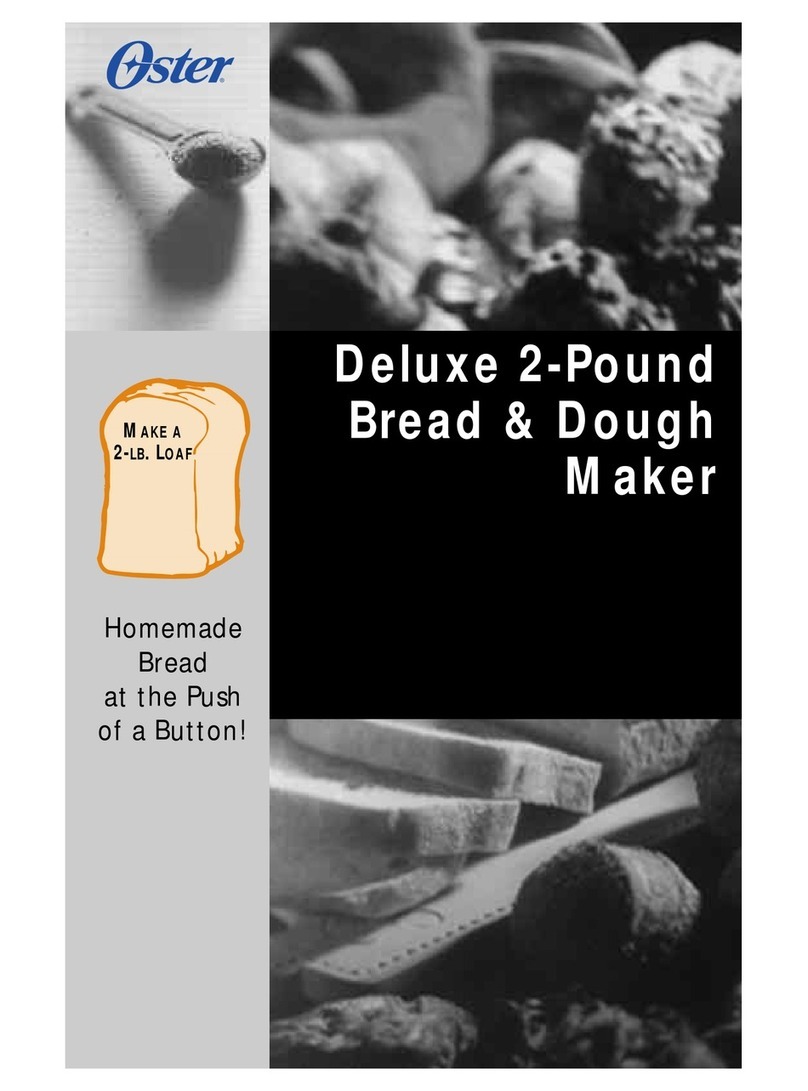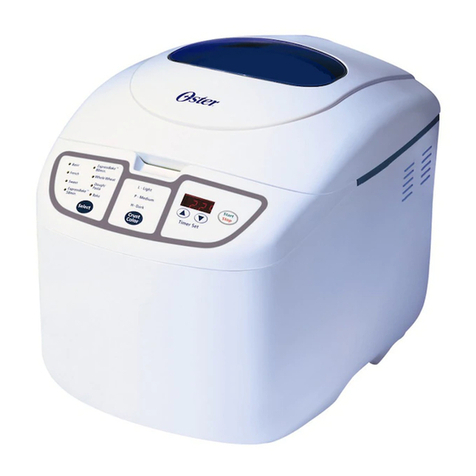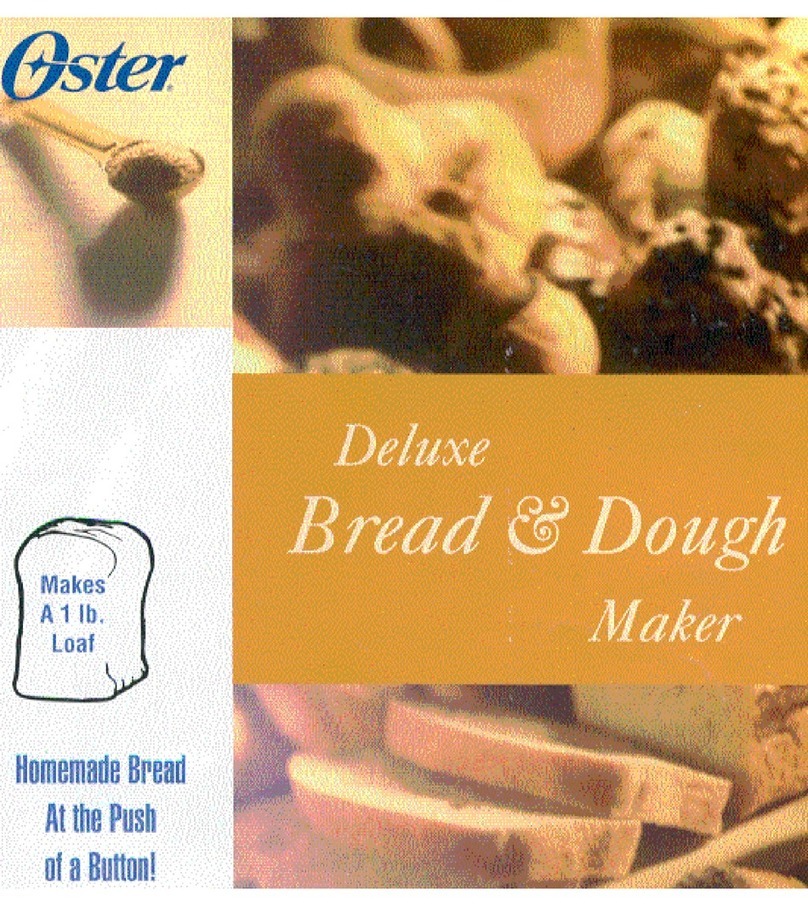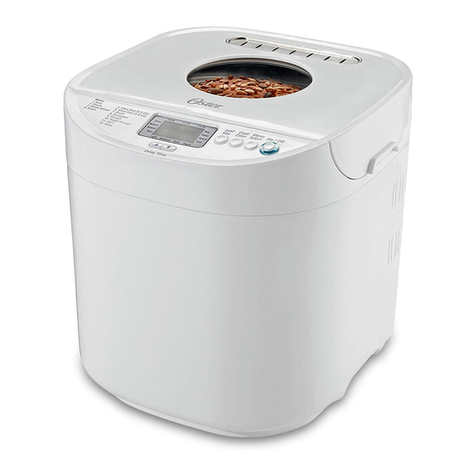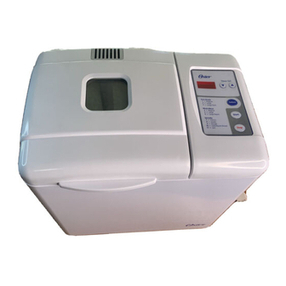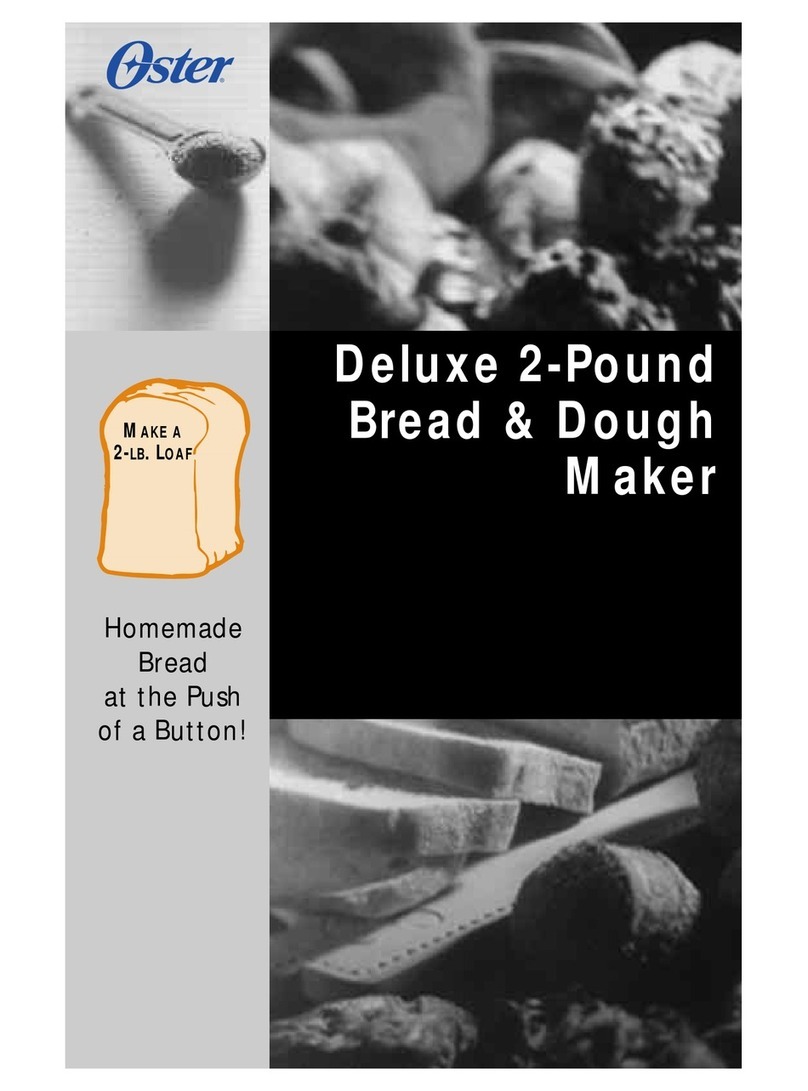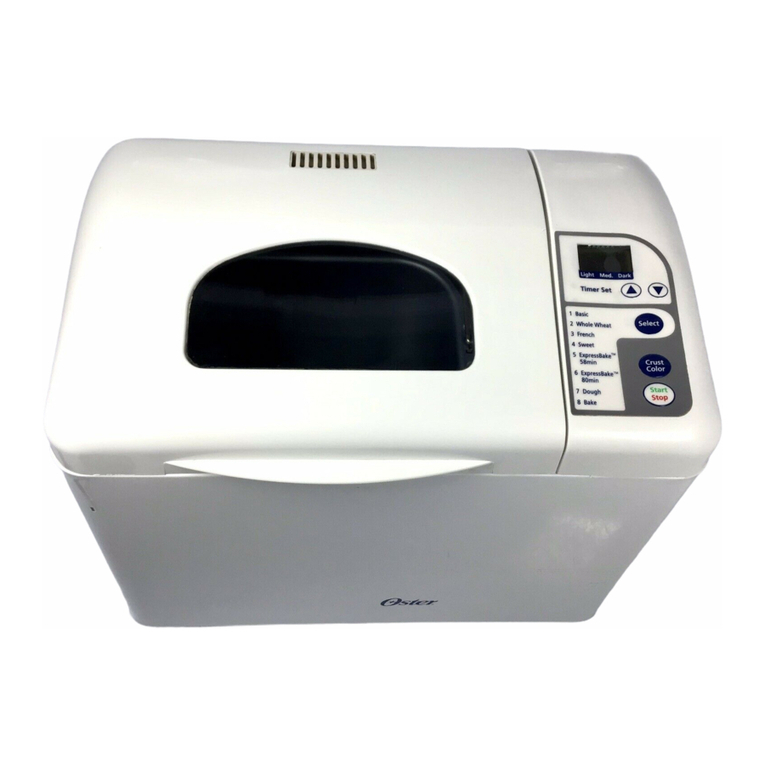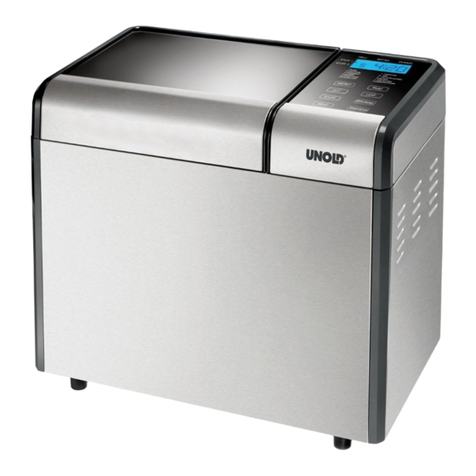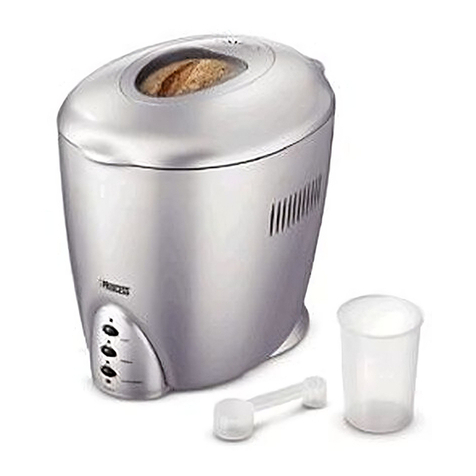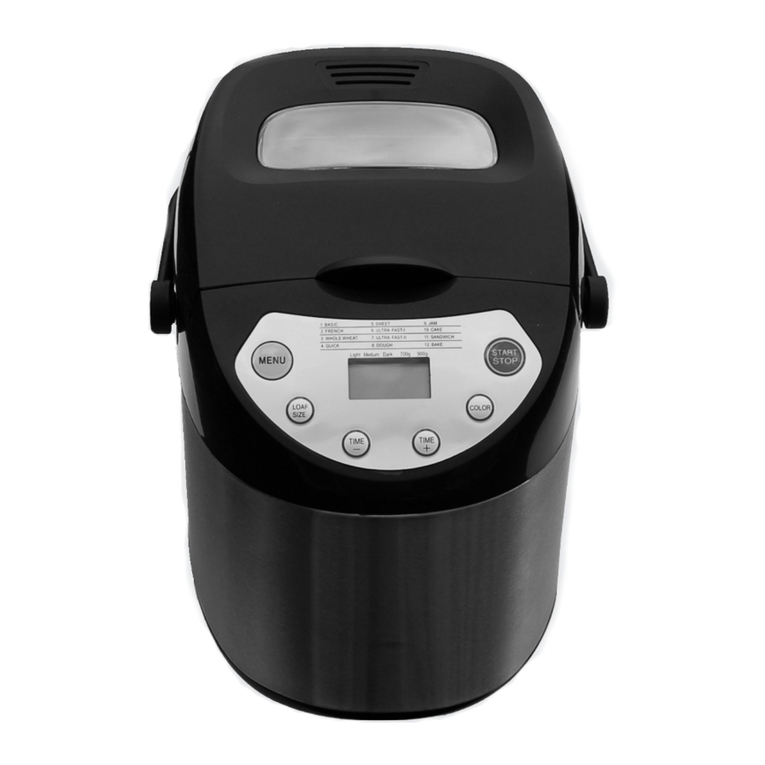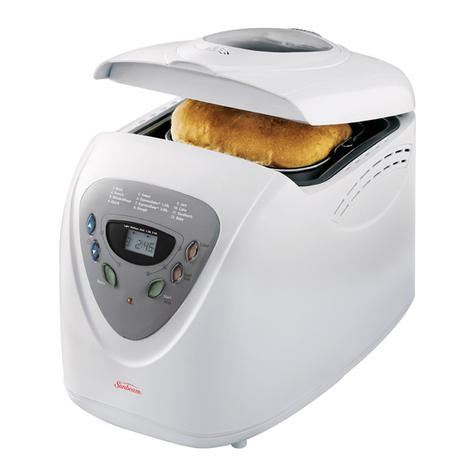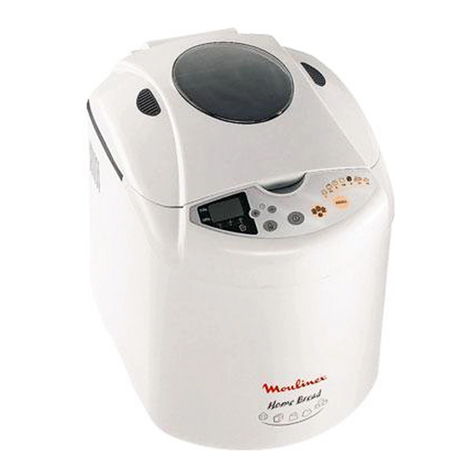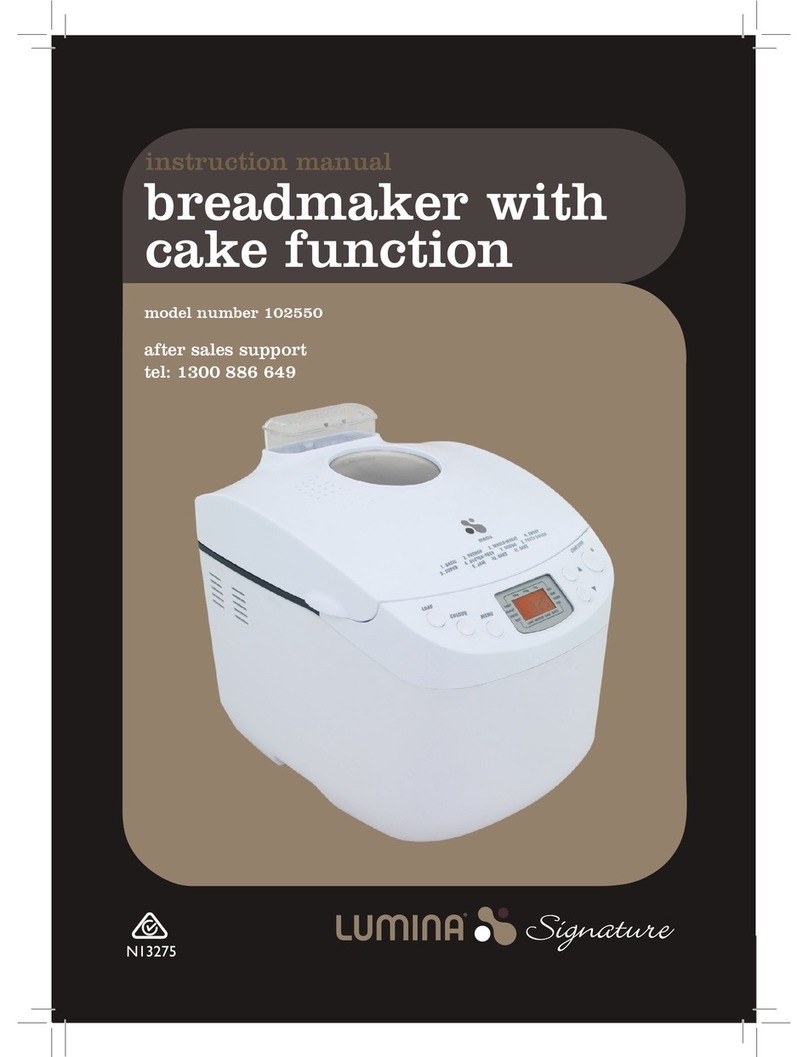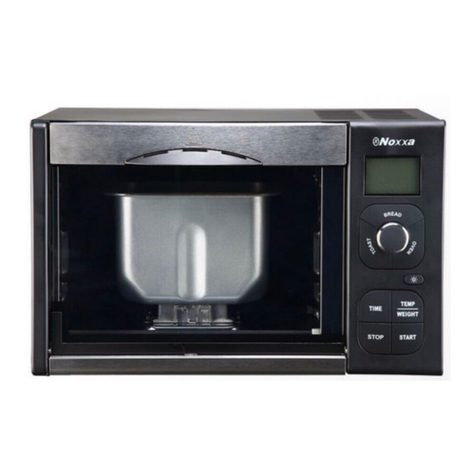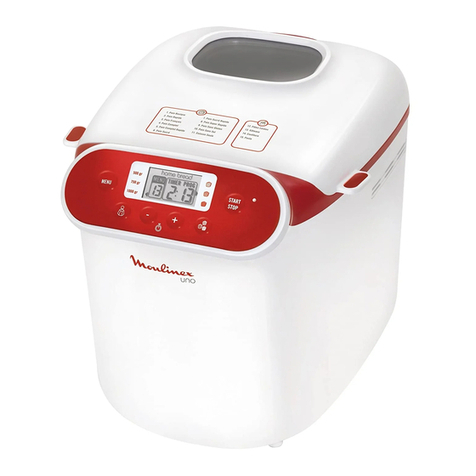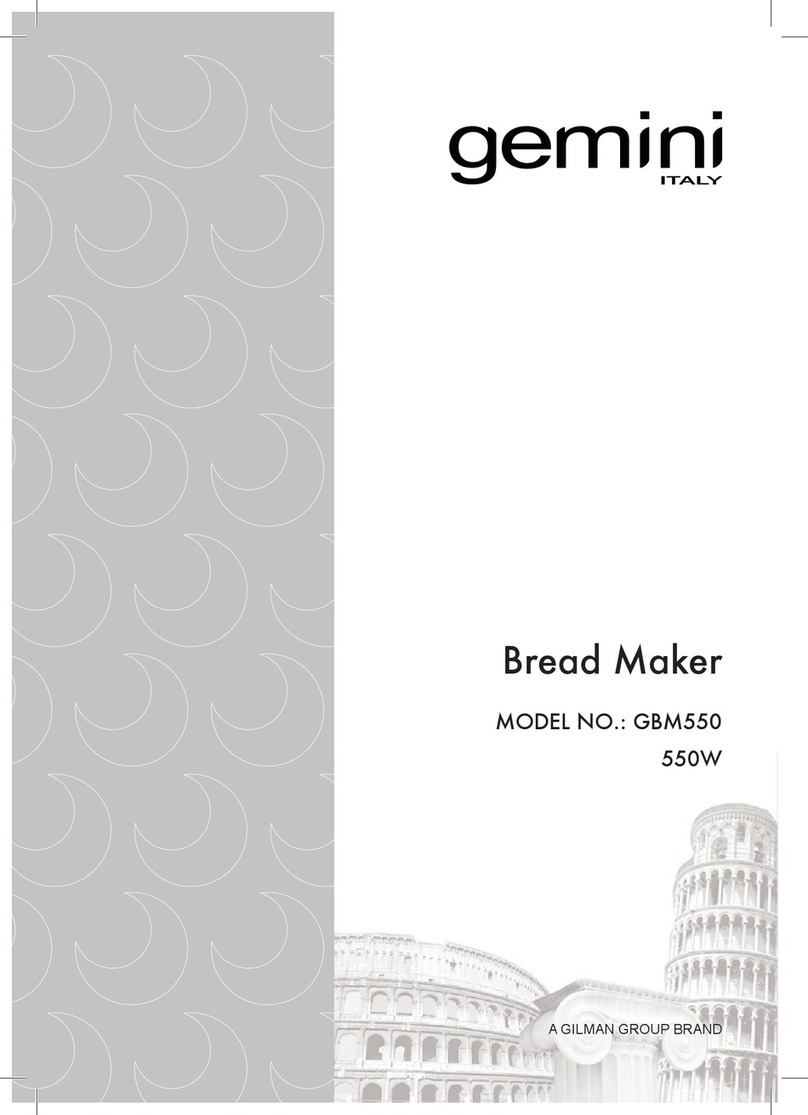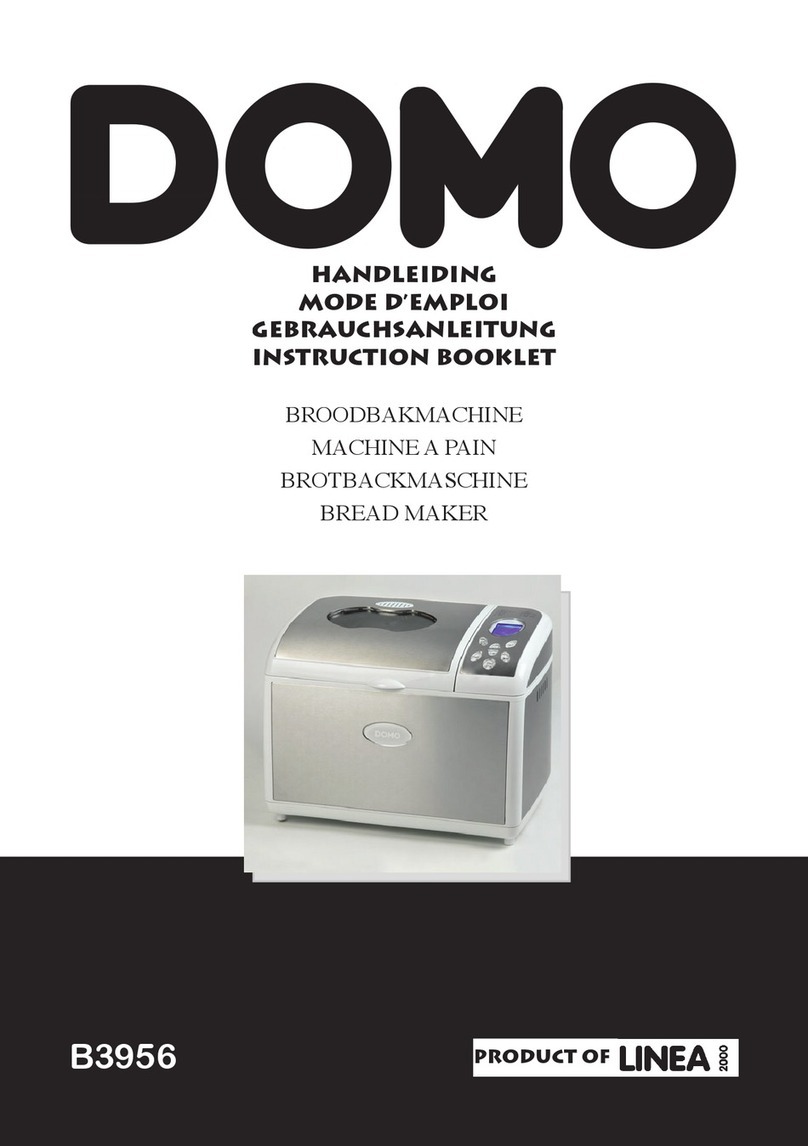Note: It is important that you DO NOT press the“Start/Stop”button while the breadmaker
is making bread. If you do, the machine will turn off and you will need to start over again,
from scratch.
Note: It is important that you should not raise the lid for this recipe. (For other recipes you
try later, you will need to raise the lid to add nuts, fruits, or other ingredients.)
Caution: The breadmaker is very hot DO NOT handle the machine while it’s operating.
DO NOT lift the lid while the breadmaker is baking bread.
Bread Machine Stages (for 2 lb. loaves)
It’s fun to watch your bread being made through the viewing window. For the basic cycle,
you can expect the following things to happen as the timer counts down to zero.
To begin: The ingredients are kneaded for the first time (5 minutes)
At 3:20, the dough rests for 5 minutes
At 3:15, the dough is kneaded for the second time (20 minutes)
At 2:55, the dough begins to rise (39 minutes)
At 2:16, the dough is“punched down”(10 seconds)
At 2:16, the dough continues to rise (25 minutes and 50 seconds)
At 1:50, the dough is shaped (15 seconds)
At 1:50, the dough comes to the last period of rise (48 minutes and 45 seconds)
At 0:60, the dough begins to bake (60 minutes)
At 0:00, the bread is finished.
After the bread is baked
Caution: Do not put your face near the lid when you open the breadmaker, hot steam may
escape that could burn you.
Important: The breadmaker has an automatic“keep warm”setting that will keep your
bread warm for up to one hour, we recommend however to remove the bread from the
breadmaker right away to preserve its freshness.
1Use pot holders or oven mitts to carefully lift the pan by its handle from the breadmaker.
2Turn the pan upside down onto a cooling rack and gently shake it until the bread comes
out. If it sticks, take a rubber spatula (metal can damage the pan’s surface) and carefully
go around the sides of the loaf until the bread comes out.
3If the kneading blade comes out with the bread, use the included kneading blade
removal tool to remove it from the loaf, Remember, it will be hot!
Allow the bread to cool for 15 minutes before slicing and enjoying it.
Important: If you wish to make another loaf of bread right away, please allow the
breadmaker to cool down for 10 to 15 minutes with the cover open and the pan removed.
Overview of Breadmaker Functions
Bread function:
Please refer to the relative recipe and follow the below process
1Insert the kneading blade into the bread pan.
2Place ingredients in the bread pan in the following order: liquid ingredients first, dry
ingredients (except yeast) second and yeast last. Note: Yeast must NEVER come into
contact with a liquid when you are adding ingredients.
3Insert bread pan into breadmaker then gently close the lid.
4Plug in the breadmaker, the LCD will display“MENU 1 TIMER 3:25”.
5Press the Menu Select button to choose the type of bread desired (BASIC, FRENCH,
WHOLE WHEAT, SWEET, QUICK, EXPRESS BAKE (1.5lbs.), EXPRESS BAKE (2.0lbs.), GLUTEN
FREE, DOUGH, PASTA DOUGH, JAM, BAKE, CAKE). Note: Display will indicate the Menu
number corresponding to the bread type selected from 1 to 13.
6Press the Crust Color Button to select the color crust desired (Light, Medium, Dark or
Rapid). Note: Display will indicate the crust color with an arrow pointing to the
corresponding crust color selected (select programs have fixed settings).
Note: Rapid setting is available on Basic, French or Whole Wheat programs and reduces
the total time by about an hour for quicker results.
7Press Loaf Size button to select loaf size (1.0lb, 1.5lb or 2.0lb). Note: Display will indicate
the loaf size with an arrow pointing to the corresponding loaf size selected (select
programs have fixed settings).
8If delay time is needed, press the up or down delay time arrows to adjust the delay
timer accordingly, the delay timer can be set for up to 15 hours. Note: The delay time
is calculated as the working time plus the delayed time (example for basic bread 2.0 lbs:
delay time set to 15:00 hours = a delay time of 11 hrs. & 35 min. plus the working time
of 3 hrs. & 25 min. for basic bread 2.0 lbs).
9Press the“Start/Stop”button to start the breadmaker.
10 If you need to stop the breadmaker, press the “Start/Stop”button for about 1 second,
the breadmaker will stop, however you will need to redo the process.
11 Once the program is complete and the display shows“0:00”, it will beep 15 times as a
warning then it will switch to keep warm mode. In keep warm mode, the“0:00”will flash.
Note: Keep warm mode will last for up to 1 hour, after 1 hour it will beep 15 times and go
back to the initial status.
12 When the machine beeps, indicating the program is finished, pull the bread pan
straight up and out of the machine with oven mitts. Turn the bread pan upside down
and gently shake until bread falls out. Take out the kneading blade from the bottom of
bread using the included kneading blade removal tool and you are ready to eat.
Dough function:
The dough function program is similar to the bread function, except that there is no baking
mode operation. When the program is finished, it will beep 5 times as a warning. When the
machine beeps, indicating the program is finished, remove the dough from the bread pan.
Baking function:
This function can be used to bake bread or other dough. Please refer to the relative recipe
and follow the below process.
